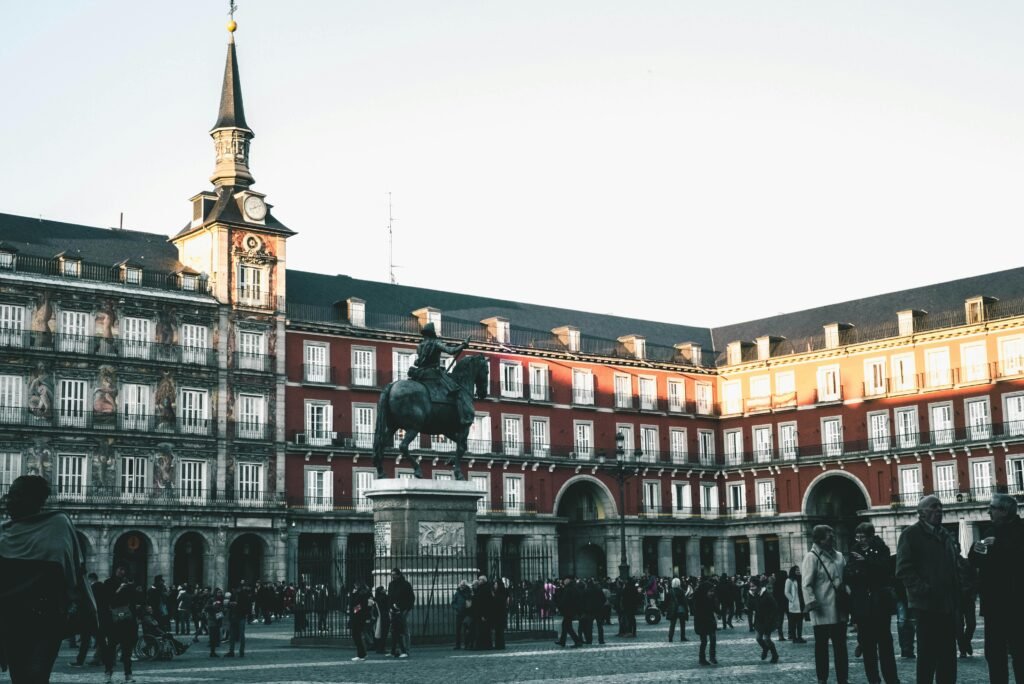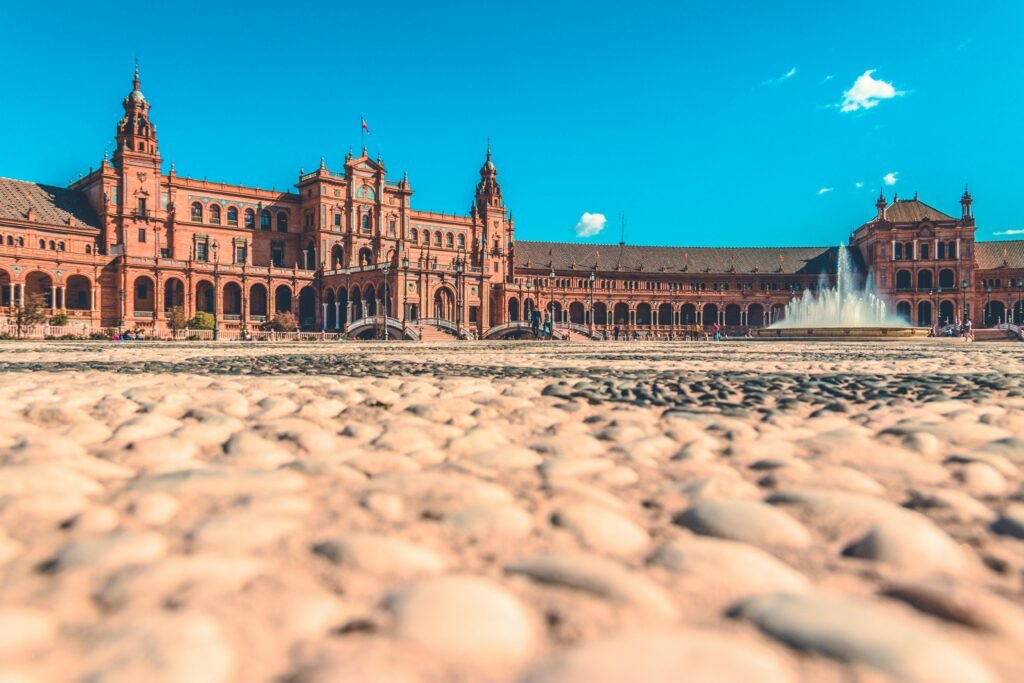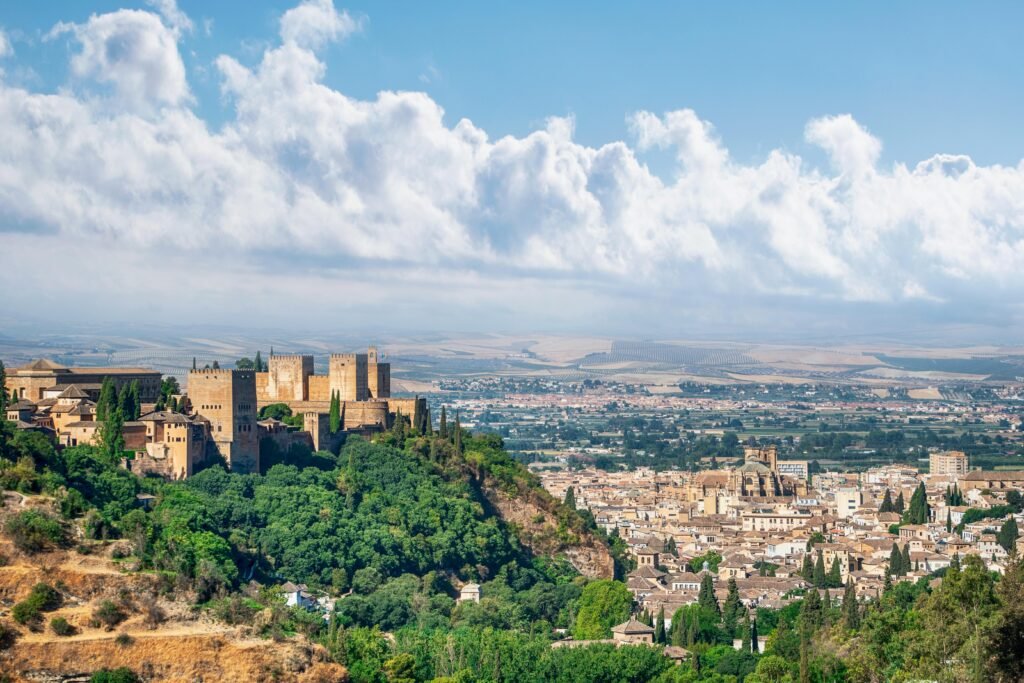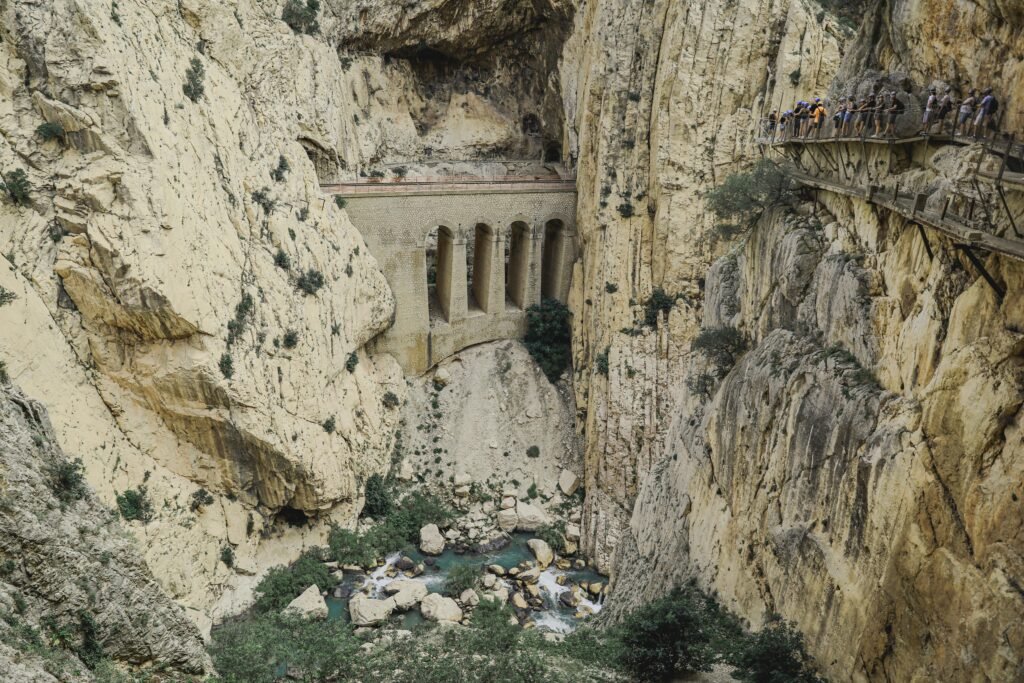Introduction to Spain’s Rich Cultural Heritage
Spain, a European nation located on the Iberian Peninsula, boasts a captivating tapestry of cultural heritage that spans centuries. From the ancient ruins of Roman structures to the intricate beauty of Moorish architecture, the country reveals a history steeped in diversity and artistic expression. This complexity is further enriched by various regional identities, each contributing unique languages, traditions, and culinary delights. Spain’s geographic diversity ranges from the rugged peaks of the Pyrenees to the sun-kissed beaches of the Mediterranean coast, creating varied landscapes that influence local customs and lifestyles.

The fusion of historical influences—such as Roman, Visigothic, and Moorish—has culminated in a rich cultural milieu that sets Spain apart as a premier travel destination. Cities like Barcelona showcase the whimsical works of Antoni Gaudí, while Seville resurrects the allure of flamenco and traditional tapas. Madrid, the country’s capital, boasts world-renowned museums like the Prado and Reina Sofia, presenting masterpieces by the likes of Velázquez and Picasso. The numerous festivals celebrated throughout the year offer visitors a glimpse into unique Spanish traditions, such as La Tomatina and Semana Santa, each reflecting the nation’s vibrant spirit.
Moreover, Spain’s culinary scene is a testament to its dynamic culture, characterized by diverse regional dishes and flavors. From the savory paella of Valencia to the rich, flavorful pintxos of the Basque Country, each meal tells a story, interweaving history, geography, and community. The country’s emphasis on social dining and communal experiences further enhances the traveler’s experience, encouraging engagement with locals and their rich traditions. For first-time travelers, Spain presents an irresistible combination of historical richness, cultural vibrancy, and scenic beauty, making it a must-visit destination for those seeking a profound travel experience.
Barcelona: The Art and Architecture Capital
Barcelona, the vibrant capital of Catalonia, is an essential destination for first-time travelers in Spain. Renowned for its rich artistic heritage and stunning architectural masterpieces, the city seamlessly blends traditional Spanish culture with modern innovations. One cannot mention Barcelona without highlighting the iconic Sagrada Família, a unique basilica designed by the renowned architect Antoni Gaudí. This remarkable structure, characterized by its intricate facades and towering spires, attracts millions of visitors each year and remains an unfinished project that symbolizes the city’s artistic spirit.

In addition to the Sagrada Família, Barcelona boasts other notable landmarks, such as Park Güell and Casa Batlló. These sites further exemplify Gaudí’s genius and the distinctive Modernisme architectural movement that flourished in the early 20th century. Park Güell, adorned with colorful mosaics and whimsical structures, offers stunning views of the city, making it a perfect spot for leisurely exploration and relaxation. Meanwhile, Casa Batlló stands as a testament to Gaudí’s ability to push the boundaries of traditional architecture with its organic shapes and vibrant colors.
Travelers seeking an authentic dining experience in Barcelona will find a plethora of options. From traditional tapas bars to innovative gastronomic establishments, the culinary scene is as diverse as the city’s architecture. Mercat de Sant Josep de la Boqueria, one of the most famous markets, offers visitors a chance to indulge in fresh produce, local delicacies, and traditional Catalan dishes. To navigate Barcelona efficiently, visitors are encouraged to utilize the city’s comprehensive public transportation system, which includes buses, trams, and the metro, making it easy to access various neighborhoods and attractions.
Barcelona’s lively atmosphere, combined with its artistic and architectural richness, makes it a must-visit city for any first-time traveler to Spain. The vibrant streets, cultural offerings, and gastronomy ensure an unforgettable experience in this enchanting city.
Madrid: The Heart of Spain
As the capital city of Spain, Madrid stands out as a vibrant metropolis where modernity meets a rich historical tapestry. The city’s central location not only makes it easily accessible but also enhances its status as a cultural hub. Visitors to Madrid can immerse themselves in an abundance of world-class art museums, the likes of which include the Prado Museum, renowned for its vast collection of European masterpieces, and the Reina Sofía Museum, home to Pablo Picasso’s iconic “Guernica.” These institutions serve as testaments to the city’s commitment to art and cultural heritage.

In addition to its illustrious art scene, Madrid boasts beautiful parks that offer a serene escape from the urban hustle. The Retiro Park, often referred to as the lungs of the city, features sprawling gardens, tranquil lakes, and numerous sculptures, making it a perfect spot for relaxation or a leisurely stroll. Another notable outdoor space is Madrid Río, which has transformed the banks of the Manzanares River into a picturesque landscape designed for both leisure and recreation. The parks of Madrid provide a refreshing contrast to the vibrant city life.
The nightlife in Madrid is equally captivating, known for its lively atmosphere and diverse options. The neighborhood of Malasaña offers a bohemian vibe with its eclectic bars and late-night venues, whereas the upscale Salamanca district showcases chic lounges and fine dining options. Late-night tapas bars invite visitors to indulge in local delicacies such as “patatas bravas,” “jamón ibérico,” and “churros con chocolate,” providing an authentic taste of Spanish cuisine. Together, these elements make Madrid not just a city to visit, but a destination to experience. The unique blend of art, nature, nightlife, and culinary delights truly makes Madrid the heart of Spain for first-time travelers.
Seville: A Cultural Oasis
Seville, the capital of Andalusia, is often regarded as a cultural oasis for travelers seeking rich history and vibrant traditions. Renowned for its stunning architecture and artistic heritage, the city effortlessly blends its Moorish past with modern influences, making it an essential stop for first-time visitors to Spain. One of the most iconic landmarks in Seville is the Real Alcázar, a breathtaking palace complex that showcases a fusion of Mudéjar, Gothic, Renaissance, and Baroque styles. The intricate tilework, lush gardens, and tranquil water features offer visitors a glimpse into the opulent lifestyle of the Spanish monarchy.

Another must-see attraction is the Seville Cathedral, a UNESCO World Heritage site, which is one of the largest cathedrals in the world. This impressive structure is home to the tomb of Christopher Columbus and features the Giralda, a historic bell tower that provides panoramic views of the city. The blend of Islamic architectural elements and Christian artistry is a testament to the city’s diverse cultural influences.
Seville is also the birthplace of Flamenco, a passionate and expressive art form that embodies the spirit of Andalusian culture. Numerous venues across the city offer captivating Flamenco performances, inviting travelers to experience this profound cultural spectacle firsthand. Additionally, local festivals, such as the April Fair and Semana Santa, are vital components of Seville’s cultural calendar. During these celebrations, the streets come alive with vibrant parades, traditional costumes, and communal festivities that showcase the city’s deep-rooted traditions.
With its rich history, remarkable architecture, and lively cultural expressions, Seville is a don’t-miss destination for first-time travelers to Spain. The city promises an unforgettable experience that beautifully encapsulates the essence of Spanish culture.
Valencia: A Blend of Tradition and Innovation
Valencia, the third-largest city in Spain, presents an intriguing blend of tradition and modernity, making it an attractive destination for first-time travelers. Known for its rich cultural heritage, Valencia is a city where historical customs seamlessly coexist with cutting-edge architecture. One of its most famous culinary contributions is, undeniably, the traditional dish of paella, which originated from this region and embodies the local flavor and agricultural practices.

The City of Arts and Sciences, an architectural marvel, is one of Valencia’s most iconic attractions. This futuristic complex, designed by Santiago Calatrava and Félix Candela, features a science museum, planetarium, aquarium, and more. Visitors are often amazed by the stunning curves and the striking white structures that contrast vividly against the clear blue sky. This attraction not only showcases innovative design but also offers extensive educational experiences, making it a perfect stop for those looking to understand the interplay between art, science, and nature.
In addition to its forward-thinking architecture, Valencia is home to the Turia Gardens, which provide a beautiful landscaped respite in the heart of the city. These gardens occupy a former riverbed that has been transformed into a lush park, featuring walking paths, playgrounds, and areas for relaxation. The juxtaposition of the gardens with the modern skyline reinforces Valencia’s unique identity, allowing visitors to experience both the tranquility of nature and the vibrancy of urban life.
As travelers meander through its streets, they will encounter numerous plazas, each echoing the city’s historical roots while also embracing contemporary trends. Valencia’s ability to honor its past while innovatively adapting to the present positions it as a must-visit destination in Spain for those seeking a dynamic blend of culture and modernity.
Bilbao: A Gateway to Basque Culture
Bilbao, situated in the heart of Spain’s Basque Country, is a vibrant city that seamlessly blends a rich cultural heritage with contemporary urban life. Known for its distinctive architecture and dynamic artistic scene, Bilbao serves as a gateway to the unique traditions and flavors of Basque culture. At the forefront of this cultural renaissance is the Guggenheim Museum, an architectural marvel designed by Frank Gehry. This museum not only houses a remarkable collection of modern and contemporary art but also stands as a symbol of the city’s revitalization since its opening in 1997.

Visitors to Bilbao are often captivated by the city’s diverse culinary offerings, particularly its renowned tapas bars, known locally as pintxos. These establishments provide an authentic taste of Basque gastronomy, encouraging diners to sample a variety of small dishes paired with local wines and ciders. Pintxos vary from traditional recipes to innovative creations, reflecting the region’s commitment to culinary excellence. It is during these social dining experiences that travelers can engage with locals and gain deeper insights into the Basque way of life.
Another allure of Bilbao is the stunning Basque landscape that envelops the city. Nestled between green hills and the estuary of the Nervión River, the area’s natural beauty is a compelling reason to explore beyond the urban center. A short drive or hike can lead to picturesque coastal towns like Getxo, where sandy beaches meet rugged cliffs, offering breathtaking views and opportunities for outdoor activities such as surfing or hiking.
Bilbao stands out as a destination rich in culture and culinary delights, making it an essential stop for first-time travelers looking to immerse themselves in the heart of Basque identity. The city’s unique combination of art, food, and stunning landscapes enriches the travel experience, ensuring that visitors leave with a lasting impression of the Basque Country.
Granada: The Jewel of Andalusia
Granada, a mesmerizing city nestled in the foothills of the Sierra Nevada mountains, is renowned for its rich Moorish heritage and captivating architectural marvels. The city’s heart beats strongest at the Alhambra, an exquisite palace and fortress complex that showcases the pinnacle of Islamic architecture in Spain. Built during the Nasrid dynasty, this UNESCO World Heritage Site boasts intricate tile work, lush gardens, and stunning views of the surrounding mountains. Visitors are often left in awe by the detailed craftsmanship visible in every corner, making the Alhambra a must-visit landmark for those exploring Granada.

The charm of Granada is not limited only to the Alhambra. The Albayzín district, characterized by its narrow, winding streets and whitewashed houses, is a testament to the city’s rich Islamic past. This area, once an Arab settlement, invites travelers to wander its cobblestone streets, where history seeps from the very walls. Exploring Albayzín, one can discover quaint shops, tapas bars, and local artisan studios, all while soaking in the panoramic views of the Alhambra and the Sierra Nevada. The blend of history and contemporary life in Granada offers a unique experience for every visitor.
In addition to its historical significance, Granada has a vibrant modern atmosphere. With a thriving student population, thanks to the presence of the University of Granada, the city is alive with energy, culture, and innovative gastronomy. Tapas culture flourishes here, where traditional flavors meet modern culinary techniques, drawing locals and tourists alike to the bustling eateries. Moreover, annual festivals, such as the international Festival de Música y Danza, further enrich the cultural landscape, allowing travelers to experience the authentic spirit of Granada.
Malaga: Sun, Sea, and History
Malaga, located in the southern region of Spain known as Andalusia, is a remarkable coastal city that captures the essence of both sun and sea, alongside a rich historical backdrop. As one of the oldest cities in the world, Malaga boasts a fascinating history that weaves through its diverse architectural styles and cultural offerings. The stunning beaches, such as La Malagueta and Playa de la Caleta, are well-known for their golden sands and crystal-clear waters, attracting both locals and tourists seeking relaxation under the Mediterranean sun.

The city is not merely a destination for sunbathing; it is also home to numerous historical treasures. At the heart of Malaga lies the Alcazaba, a Moorish fortress that dates back to the 11th century. This impressive structure, along with the nearby Roman Theatre, provides visitors a glimpse into the city’s storied past. As travelers wander through the narrow, winding streets of Malaga’s old town, they will encounter charming plazas, vibrant local markets, and inviting tapas bars that offer a taste of the region’s culinary delights.
An integral part of Malaga’s cultural landscape is the renowned Picasso Museum, celebrating the works of the city’s most famous son, Pablo Picasso. The museum houses an extensive collection of the artist’s works, allowing visitors to appreciate the evolution of his artistic style and the impact he had on modern art. This establishment not only attracts art enthusiasts, but it also reflects the city’s deep-rooted pride in its cultural heritage.
Malaga’s vibrant atmosphere is enhanced by various festivals and events year-round that showcase its rich Andalusian spirit. From the lively Feria de Malaga to the solemn Semana Santa procession, there is always something occurring that highlights the local traditions and community spirit. With its combination of stunning beaches, historical sites, and lively culture, Malaga makes an ideal destination for first-time travelers looking to explore the multifaceted charm of Spain.
Santiago de Compostela: A Historic Pilgrimage City
Santiago de Compostela, the capital of the Galicia region in northwest Spain, is renowned for its historical significance and vibrant cultural heritage. It serves as the culminating point for the ancient pilgrimage route known as the Camino de Santiago, drawing countless travelers from all corners of the globe. This journey, steeped in centuries of tradition, culminates at the magnificent Santiago de Compostela Cathedral, a UNESCO World Heritage site that epitomizes the rich architectural tapestry of the city.

The cathedral is not only an architectural marvel but also a spiritual beacon for pilgrims and tourists alike. Its intricate façade, a blend of Romanesque, Gothic, and Baroque styles, captivates visitors with its detailed sculptures and grand towers, showcasing the artistic craftsmanship of various periods. Inside, the ambiance of reverence is palpable, with the revered shrine of Saint James, the apostle to whom the cathedral is dedicated, being the focal point of devotion. The mythos surrounding the shrine contributes to the city’s ethereal atmosphere, making it a crucial stop for those seeking a deeper cultural experience.
Beyond the cathedral, Santiago de Compostela is imbued with historic charm. The narrow cobblestone streets, lined with traditional Galician houses and quaint cafés, invite visitors to explore the city’s rich history. The historic old town, with its lively atmosphere and vibrant plazas, serves as an ideal backdrop for experiencing local Galician cuisine, especially the famous pulpo a la gallega (Galician octopus) or empanadas. For first-time travelers, the combination of spiritual significance, stunning architecture, and cultural immersion makes Santiago de Compostela an essential addition to their itinerary, promising unforgettable memories and insights into Spain’s historical landscape.
